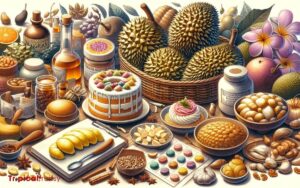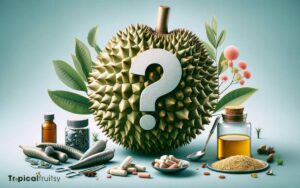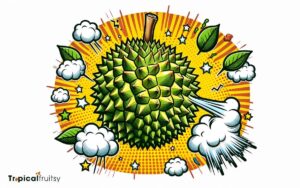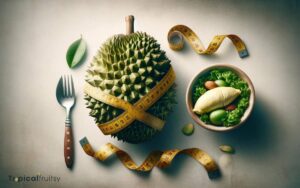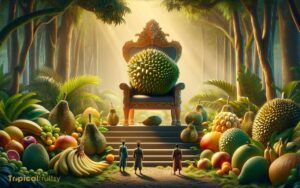Why Does Durian Have Spikes? Unlocking the Secrets!
The spiky exterior of the durian fruit is an evolutionary adaptation that acts as a natural defense against predators.
These spikes help to protect the fruit from being eaten before the seeds are mature enough to germinate, thus supporting the species’ survival and propagation.
Durian spikes illustrate nature’s ingenuity in ensuring species propagation through formidable defense mechanisms.
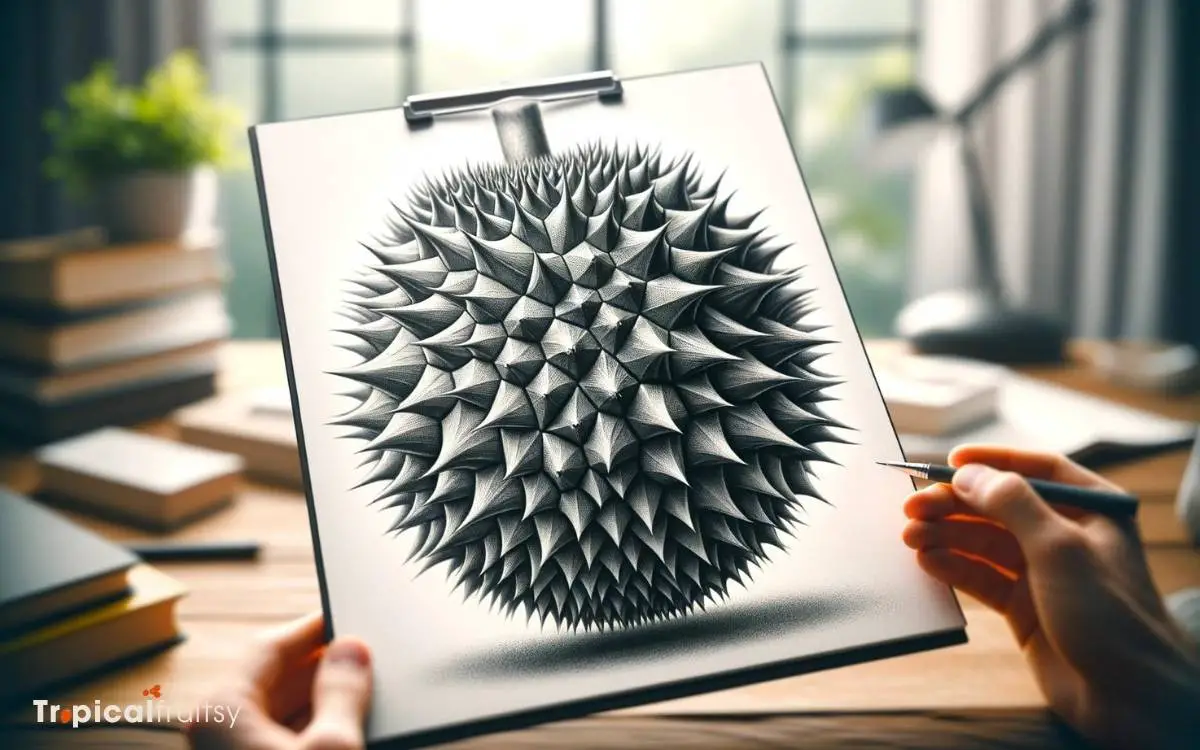
Key Takeaway
Durian Spikes: Functions and Evolutionary Advantages
| Function | Description | Evolutionary Benefit |
|---|---|---|
| Natural Defense | Spikes prevent animals from prematurely consuming the fruit. | Reduces risk of seed damage by predators. |
| Seed Protection | Protects the integrity of seeds until they are ready to grow. | Increases chances of successful seed dispersal. |
| Climatic Aid | May provide some protection against environmental challenges. | Enhances the fruit’s resilience to weather. |
| Human Influence | Selective breeding has emphasized spiky traits. | Results in durian varieties with prominent spikes. |
Evolutionary Significance of Spikes
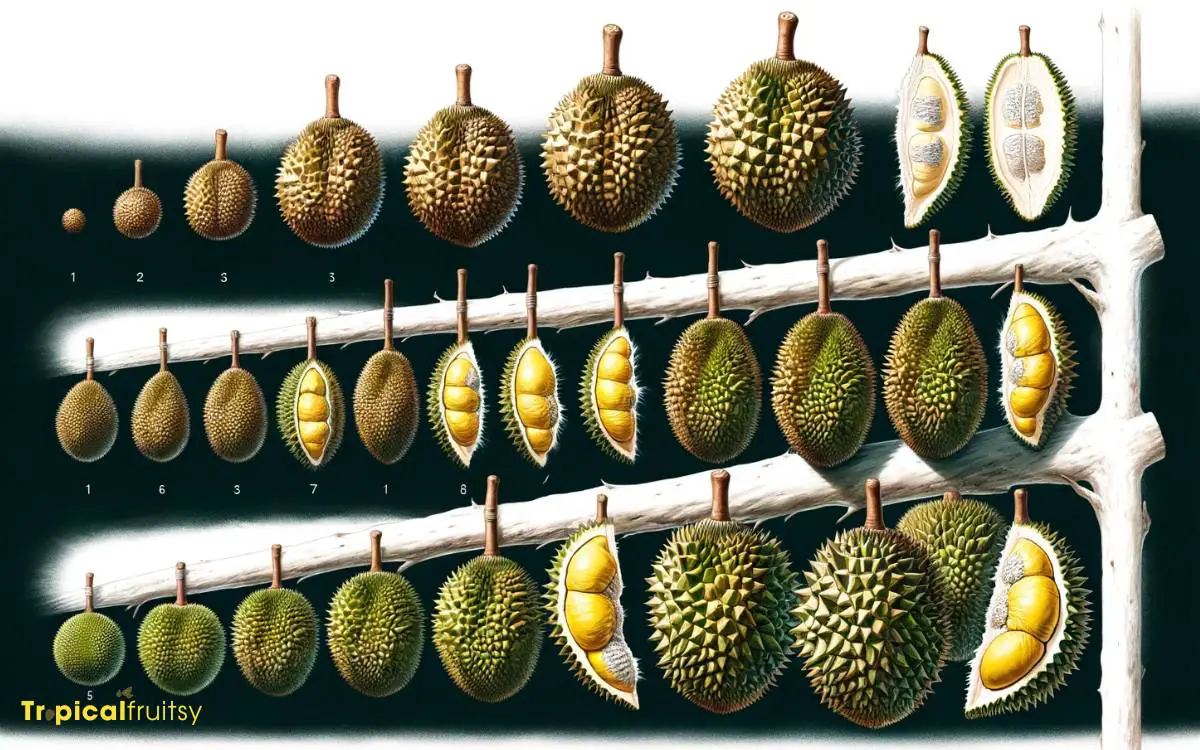
The morphology of durian, particularly its characteristic spikes, represents an evolutionary adaptation for deterrence against predation.
These formidable protrusions serve as a mechanical barrier, deterring animals from consuming the fruit before the seeds within are mature and ready for dispersal.
The durian’s spikes may also reduce the probability of damage from falling, as the robust structure could cushion the impact upon descent from the lofty heights at which the fruit develops.
This hypothesis is bolstered by observations of the fruit’s natural habitat, where the dense undergrowth could potentially damage an unprotected fruit.
Furthermore, the spikes may have a role in thermoregulation, as the increased surface area can dissipate heat more effectively, protecting the vital reproductive components from temperature extremes.
Thus, the durian’s spiky exterior is not merely distinctive but also integral to its reproductive success.
Defense Against Predators
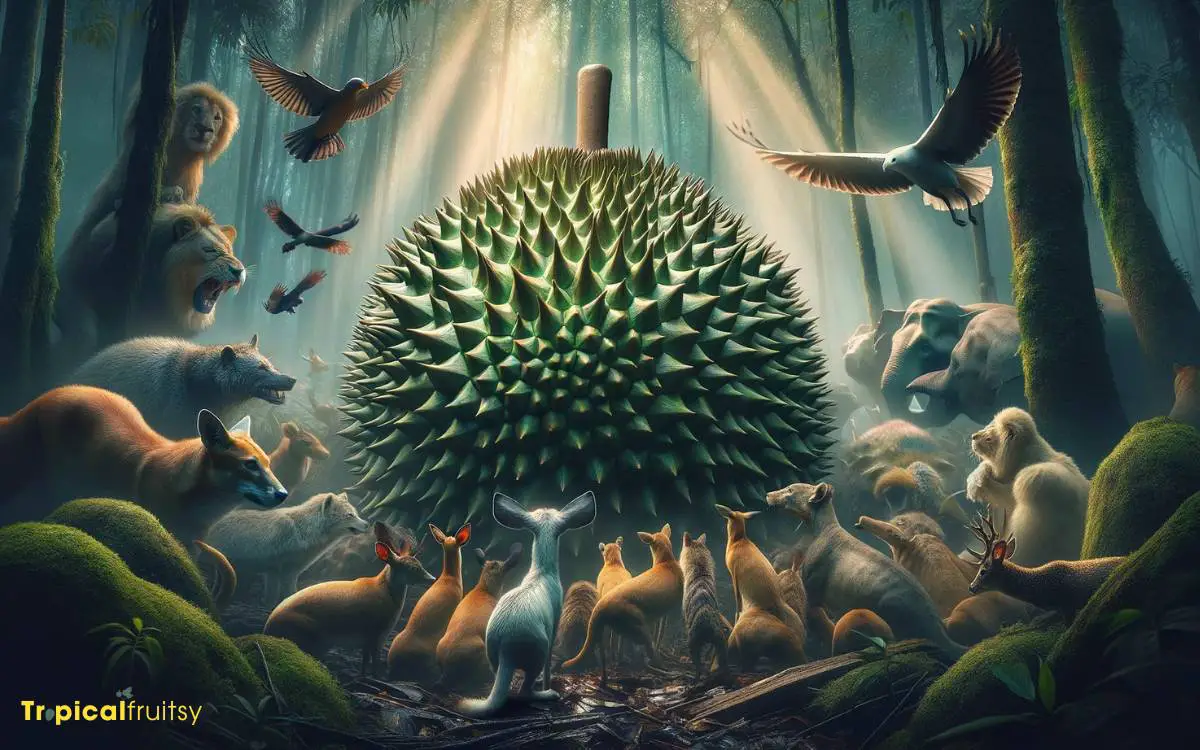
Durian’s spikes function as a natural defense mechanism, deterring potential predators from eating the fruit and safeguarding its seeds.
The physical characteristics of the durian have evolved to present a formidable barrier that challenges consumption by various animals.
These spikes may serve to:
- Prevent the fruit from being easily accessible to smaller animals that cannot penetrate the tough exterior.
- Discourage larger animals from attempting to consume the fruit due to the potential for injury.
- Protect the integrity of the fruit until it reaches full maturation, ensuring seed dispersal.
- Deter climbing animals from foraging, as the spikes can cause discomfort and impede their grip.
This strategic adaptation ensures that the durian’s reproduction cycle is maintained, with only certain animals capable of facilitating effective seed dispersal without destroying the seeds.
Facilitating Seed Dispersal
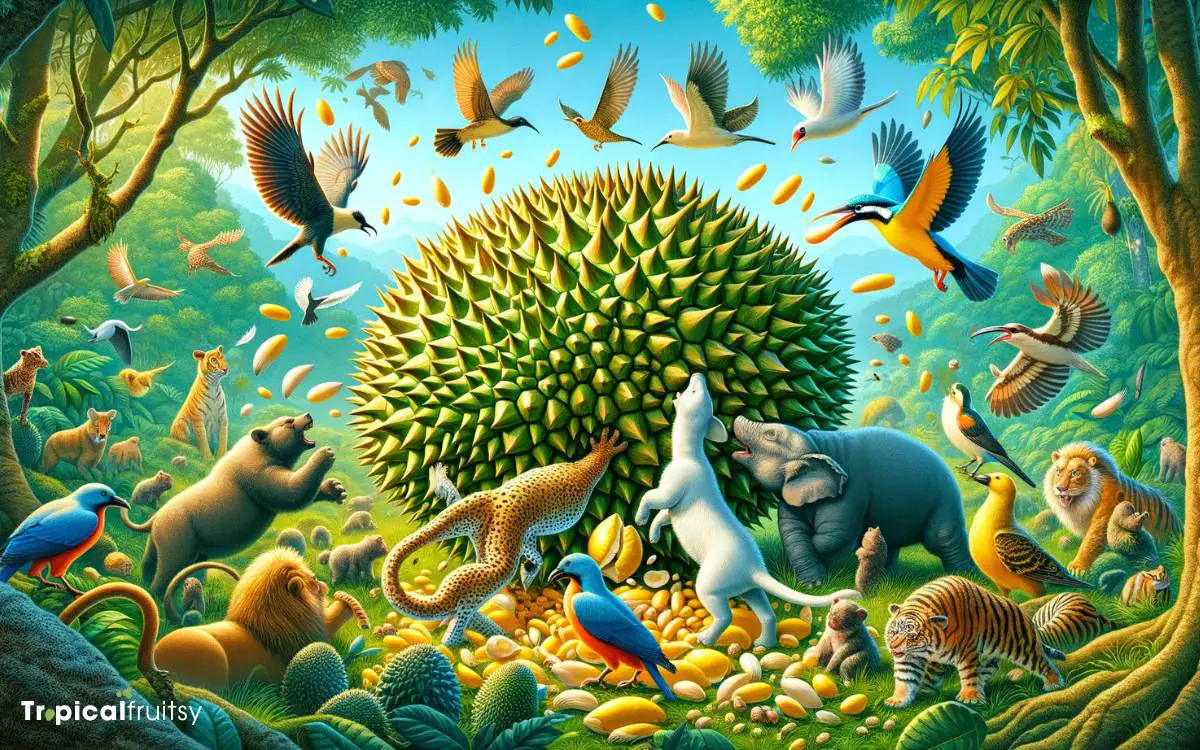
Beyond its role as a deterrent, the durian’s spiky armor also plays a pivotal part in its reproductive strategy, ensuring that only specific animals capable of overcoming this defense can participate in seed dispersal.
This selective mechanism favors larger fauna, such as elephants or certain primates, which possess the physical means to handle the formidable exterior.
These animals consume the fruit, and later, the seeds are excreted at a distance from the parent plant, facilitating genetic diversity and reducing competition among seedlings.
Moreover, the spikes may serve as a deterrent to smaller animals that are less efficient dispersers due to their limited range of movement. This enhances the likelihood of seed survival and successful germination in suitable locales.
Such intricate ecological interactions underscore the necessity to examine the climatic and environmental influences that shape durian morphology.
Climatic and Environmental Influences
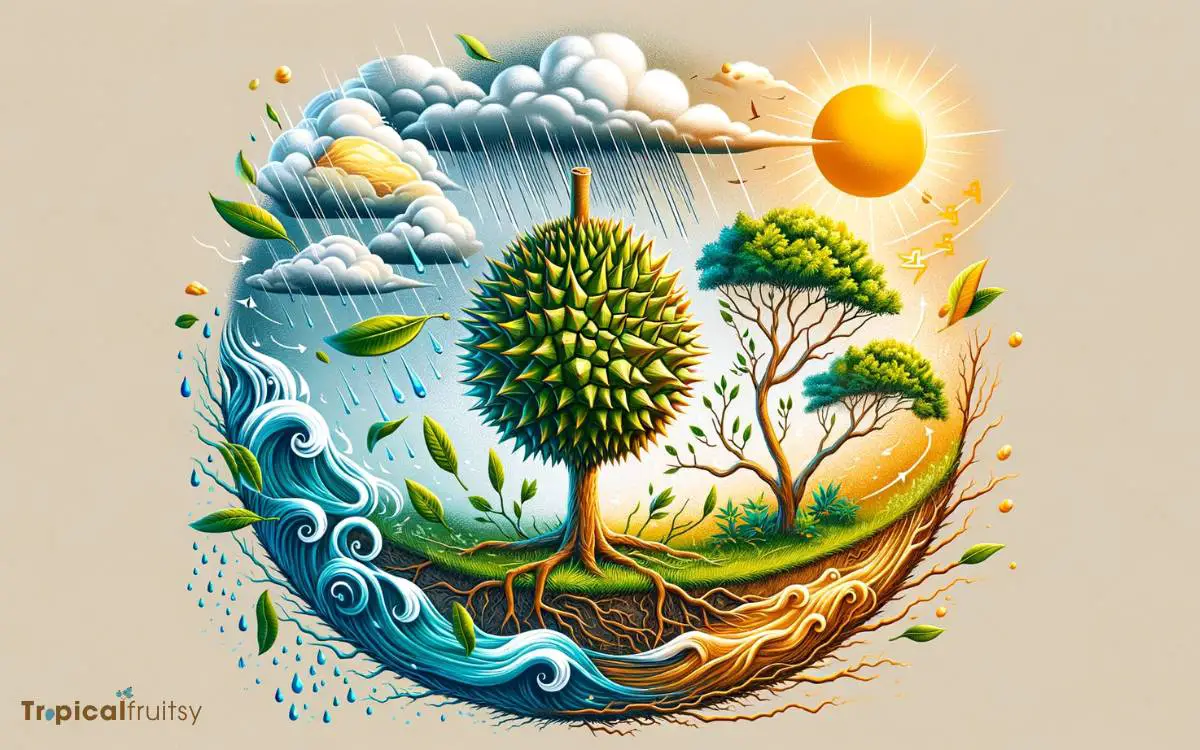
Several climatic and environmental factors have shaped the evolution of the durian’s spiky exterior, reflecting an adaptation to its native tropical habitats.
These conditions have necessitated particular survival strategies, with the durian’s formidable spikes serving as a deterrent to certain threats while also aiding in other aspects of the fruit’s life cycle.
Analyzing the durian within its ecological context reveals:
- Heavy rainfall: Promotes rapid decay of fallen fruit, necessitating protective mechanisms such as spikes to ensure seed viability.
- Dense forest canopies: Offers a competitive environment where physical defenses can prevent damage from falling debris.
- Variety of wildlife: Encourages adaptations like spikes to protect against predation from animals capable of breaching softer exteriors.
- High humidity levels: May contribute to the development of robust physical barriers to resist mold and other moisture-related decay.
Human Interaction and Cultivation
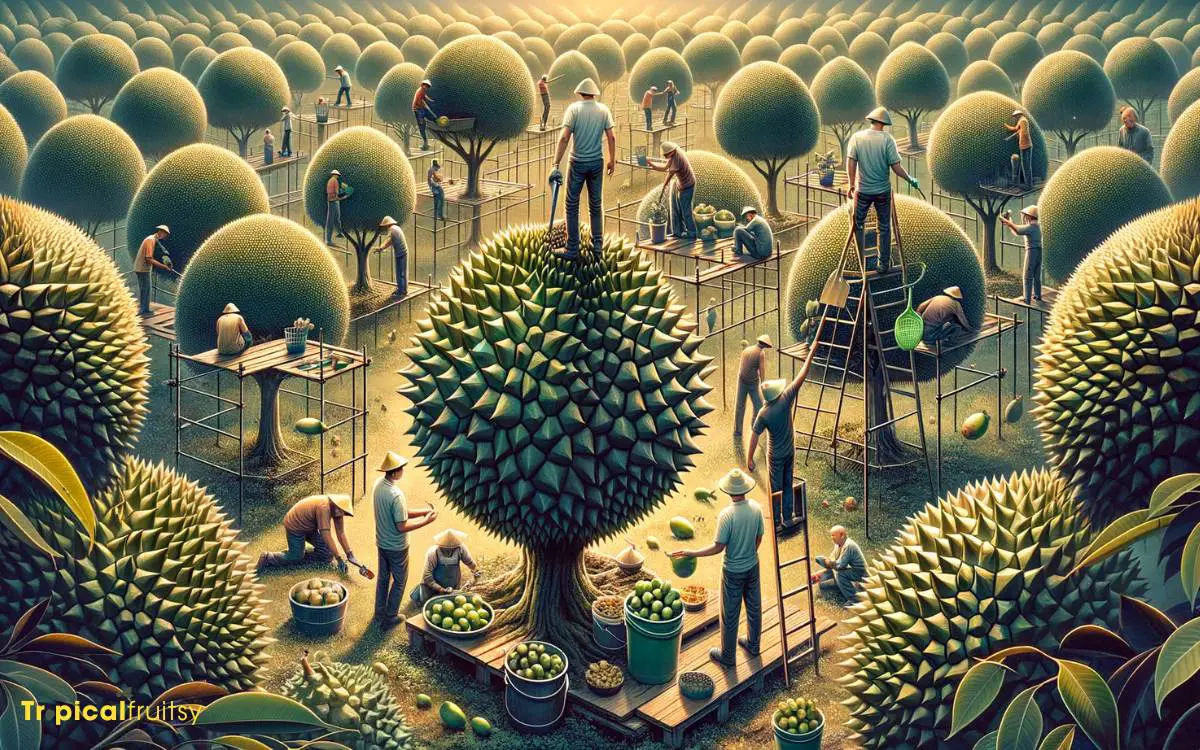
Human cultivation practices have influenced the propagation of durian varieties with particular spike characteristics, reflecting both agricultural preferences and market demands.
Selective breeding and grafting techniques have enabled farmers to cultivate durians with spikes that may provide optimal handling characteristics and potentially deter certain predators, thus enhancing their commercial viability.
The following table illustrates the relationship between durian spike traits and cultivation outcomes:
| Spike Trait | Agricultural Benefit | Market Preference |
|---|---|---|
| Length | Easier handling | Aesthetic appeal |
| Density | Enhanced protection | Texture perception |
| Sharpness | Pest deterrence | Safety during transport |
| Uniformity | Simplified processing | Consumer consistency |
These attributes, systematically selected over generations, demonstrate the intricate interplay between human intervention and the development of durian fruit characteristics, including their iconic spikes.
Conclusion
The durian’s characteristic spikes serve as a multifaceted evolutionary adaptation. These formidable protrusions provide defense against predation, aid in seed dispersal, and demonstrate the fruit’s resilience to various climatic and environmental challenges.
Moreover, the thorny exterior has been shaped by human cultivation practices. As the saying goes, ‘nature’s armor’ aptly describes the durian’s spiky defense, ensuring the survival and propagation of this unique and divisive fruit across generations.

